Month: January 2020
Know before you grow: Secrets of successful cannabis facilities

This article was original posted on the REJournals blog here.
As cannabis legalization sweeps the Midwest, demand for facilities to grow, process and sell cannabis products is skyrocketing. A shared concern in every state is product shortages; will there be enough cultivation facilities to provide product to the market? Therein lies the makings of a rush to market—and a building boom.
The business opportunity is evident. What many don’t recognize is the high risk of construction delays due to the complex requirements for cannabis facilities. While every location is regulated differently at the local and state levels, we’ve identified a set of success factors for cannabis facility site selection and construction across the eight states where we’ve led renovations.
Don’t rush pre-construction planning
In a new industry, speed-to-market is critical—but it’s a marathon, not a sprint. Carefully choosing the right site for operational success and ensuring that the drawings are compliant will be time well spent. Confirm that regulations are addressed, from cannabis-specific rules to unique building codes and even future investment structure parameters. Investing up front will reduce delays and costs later in the process.
Security comes first—no exceptions
Security is the first concern in any zoning approval meeting, regulatory inspection or other critical path approval milestone. Understanding local community and police expectations for a secure facility, beyond what is required by law, is critical to ensuring the facility design and construction will be approved for operational use. Security in the cannabis industry is more than cameras and technology installation; the building you choose must offer secure and compliant entry areas for employees and (for retail) customers, and the renovation must foresee and address any potential security risks of the facility itself.
Entry and egress are critical
For both dispensaries and cultivation facilities, the process of bringing cannabis products in and out of the building is both operationally critical and externally controversial. If you don’t have the right loading area design, you may have to make costly changes later in the process—or even abandon an otherwise strategic site, because the site simply can’t alleviate community concerns about safety or traffic.
Technology installation is part of your schedule, whether you plan for it or not
Many cultivation facilities are largely located in existing buildings that began their life as a warehouse or factory. However, the shell is just the beginning. Beyond ensuring the construction is code compliant and aligns with the operational program, the construction timeline needs to account for the installation of multiple complex interlocking technology systems required to grow high-quality, legal cannabis. Major systems include advanced HVAC systems that regulate and measure air purity, sophisticated lighting systems, cannabis processing equipment that requires custom environments, industrial-scale kitchen areas and advanced racking, water supply and automation systems.
Don’t underestimate the HVAC, lighting and other technical requirements for cultivation facilities
More similar to pharmaceutical manufacturing operations than a family farm, cannabis cultivation requires highly specialized facility features. The products that will be grown in the facility will undergo rigorous testing and compliance monitoring, requiring sophisticated lighting, air purification and water management systems. Working with a knowledgeable team who can ask the right questions based on operational experience is critical to ensuring an environment conducive to growing high-quality cannabis.
Build in flexibility for rapidly evolving needs and regulations—especially the transition from medical to recreational sales
Today’s regulations are tomorrow’s memories. In a rapidly evolving industry, your facility needs to be compliant today, and give you flexibility to adjust as regulations change. The most significant change may come when your state evolves from medicinal cannabis legalization to recreational use. Typically, when a facility has been designed according to medical regulations, it will need significant renovation to be compliant for adult use cannabis growth, processing or sales. By making future-forward decisions during the design-build and site selection processes, you’ll ensure your facility is ready for that transition, saving time and money down the road.
Environmental impact can bring construction to a halt if you’re not careful
Even well into the construction or renovation process, your facility’s impact on the natural environment is an important aspect of the project. Mistakes can potentially give ammunition to anti-cannabis foes or bring expensive and unexpected issues to address. To avoid costly environment-related delays, it is beneficial to establish relationships with local authorities early on in the development process. Be proactive and address any concerns in advance: i.e. plan to improve water and air quality; reduce energy use; manage waste discharge; protect nearby wetlands, rivers, fisheries and forests and have a plan in place in case you discover ancient human artifacts (classified as “cultural resources”).
There’s an upswell of interest from real estate companies to expand services into the cannabis sector, and rightly so, given the rising demand for cannabis retail, cultivation and processing facilities. The successful projects will be the ones that plan for the complexity of this highly regulated industry.
About the author
Andy Poticha is the principal of Northbrook, Illinois-based Cannabis Facility Construction and Mosaic Construction. He has led the renovation of more than 30 cultivation facilities, processing centers and dispensary projects totaling more than 307,800 square feet in eight states including Illinois.
